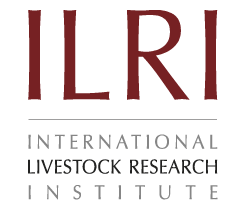Pasture Improvement
Summary
Pastures are tracts of land that support grass and other vegetation eaten by grazing animals. Pastures are usually established and fenced, and receive inputs such as fertilizers, seeds and irrigation that improve the amounts and quality of feeds derived from them. In this way, they are distinct from rangelands that are for the most part managed less intensively and less directly. Like rangeland, however, pastures degrade when overgrazed, resulting in the loss of the most nutritious plants and replacement with less productive ones. Pasture improvement refers to efforts that maintain the best species and support their productivity. Several approaches are followed in the establishment of pastures such as control of weedy patches, partial land disturbance and sowing of improved grasses and legumes, under sowing croplands with grazing plant species allowing for the establishment of crop-pasture rotation, establishment of shrub hedgerows along pasture margins and contours, and planting vegetatively propagated perennial grasses with greater productive capacity. In some cases, land is deliberately overgrazed and over sown with improved seed so that it establishes under less competition. Pastures typically contain watering troughs and are provided with supplemental feeds, and structures may be located nearby for nighttime confinement. Note that pasture not only refers to the tracts of grazed lands but also to the vegetation that is grazed.
About the Solution
Grasses and forbs obtained from pasture are a practical and affordable source of feed for goats and sheep. This is because purchased feed is too expensive for most small ruminant producers. As a result, knowledge of pasture establishment and management is a valuable skill among animal producers, allowing for greater production than from rangelands. Selection of pasture species depends on climate, with annual grasses grown in the driest areas and perennial grasses in wetter ones. Pastures are established by sowing seeds, and in some cases planting sprigs and stems of perennial grasses. In many cases the land is first plowed and fertilized during the early rainy season and allowed to establish for several months to one year. Pasture management practices include re-seeding, weeding, slashing, burning, and controlled grazing. Over time, weeds invade pastures, reducing their productivity and may be treated with selective herbicides. Note that livestock should not access pastures for one to two weeks following treatment with herbicide.
Pastures can be grazed directly by animals or cut and fed to small ruminants in stalls (see Technology 5). Goats and sheep eat the equivalent of 2% to 5% of their body weight in dry matter daily but leguminous fodder should not exceed 1/3 of this because of the risk from bloat. Grazing animals should have access to a salt lick and water. One success story relates to the pasture grass Brachiaria spp. that Increases milk production and weight gain. It offers high biomass, nutritious feed, and drought tolerance, and is well suited to making hay. Interest in this pasture species has spread to Cameroon, Ethiopia, Malawi, Mali, South Sudan, Somalia, Sudan, Tanzania, Uganda, and South Africa, in part through the efforts of TAAT.
The best pasture grasses in Africa include Chloris gayana, Brachiaria mulato, Pennisetum purpureum, Hypherrania rufa, Panicum maximum, Andropogon tectorum and Cynodon dactylon. These may be planted with leguminous ground covers and shrubs. Typical input rates of seeds are 10 to 25 kg per ha, and fertilizers 50 kg per ha, with smaller seeds required in less amounts. Often, legume seeds are accompanied with phosphate fertilizers and seed inoculation.
When designing a pasture and selecting its composition, livestock producers should consider the climate, soil, and provide irrigation and soil amendments. Some basic options for establishment follow as different approaches to pasture establishment exist. Broadcasting involves modest soil disturbance and sowing, with or without fertilizing and irrigation. Sowing improved seed into existing pasture usually takes place after close mowing, overgrazing or burning. Sowing pasture species into the understory of cereal crops allows for crop-pasture rotation. Vegetative propagation involves stem cuttings of perennial grasses introduced at the beginning of the wet season. This is commonly performed with Napier grass (Pennesetum purpureum). One option not considered in detail in this catalog is hydroponic fodder production that involves planting cereals seeds such as wheat, maize and sorghum in trays lacking rooting media. Seeds are soaked in water and spread across the trays and watered regularly until the seeds germinate and form solid stands of seedlings after seven to ten days. Both the shoots and roots are fed to animals as a nutritious feed supplement. Do not use seeds treated with insecticides or fungicides.
Commercialization
Commercially available
Solution Images
Institutions



